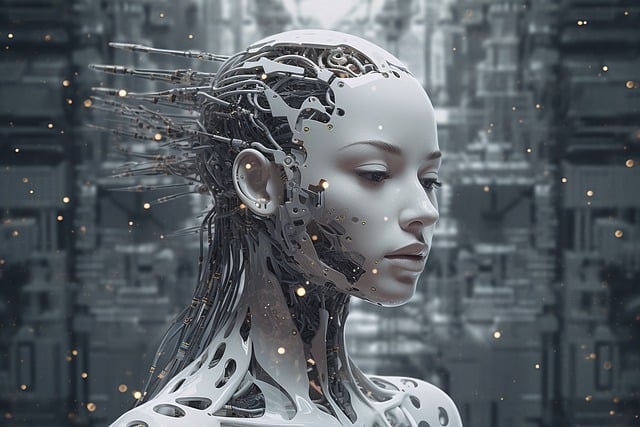
Feb 23, 2024
Introduction
The workforce has witnessed many transformations over the centuries in the relentless pursuit of productivity and efficiency. Yet, none have been as profoundly disruptive and promising as the emergence of generative artificial intelligence (AI). “The Art of Efficiency: How Generative AI is Composing the Future of Work” delves into the intricate symphony of technology and human endeavour, where generative AI takes centre stage in orchestrating a new era of innovation and productivity.
As this technology continues to evolve, its impact echoes across industries, from the meticulous craftsmanship of healthcare and finance to the boundless creativity of the arts and the precision-driven manufacturing world. This article aims to unravel the complexities of generative AI, illustrate its profound effects on various sectors, and provide a nuanced understanding of its potential to enhance human skillsets while grappling with the ethical dimensions of job displacement. Join us to explore the future employment landscape in an AI-driven world and how we can prepare for the changes ahead.
The Evolution of Work and AI’s Role
The concept of work has been in flux since the dawn of civilization. From agrarian societies to industrial revolutions, each epoch brought a seismic shift in how humans laboured and produced. Today, we stand at the precipice of yet another revolution—one that is digital and driven by the capabilities of artificial intelligence. AI’s role in the evolution of work cannot be overstated, as it represents not just a tool but a paradigm shift in the fabric of occupational structure.
Integrating AI into the workforce began with automation—systems designed to handle repetitive, predictable tasks. This allowed human workers to focus on more complex, creative, and strategic endeavours. However, the advent of generative AI has pushed boundaries even further. Unlike traditional AI, which follows predefined rules and patterns, generative AI can learn from data, identify patterns, and make decisions or create content that was never explicitly programmed to produce. This level of sophistication heralds a new chapter in the evolution of work.
In the role of a collaborator, generative AI is not just an executor of tasks but an initiator of ideas and solutions. It augments human intelligence, allowing us to tackle problems with unprecedented speed and insight. For example, AI can now draft legal documents, design components for engineers, and personalize education curricula, showcasing its versatility across domains.
The implications of AI’s role are vast and varied. With each leap in AI’s capabilities, the potential for increased efficiency, reduced costs, and enhanced innovation becomes more tangible. As generative AI continues to advance, it promises to reshape industries, redefine roles, and reimagine the future of work in ways that are only beginning to be understood.
The following section will define generative AI, more specifically, its mechanisms and examples of its applications. If you’re interested in continuing this exploration, please let me know which part of the article you want to focus on next.
Generative AI: Defining the Concept
“generative AI” refers to a subset of artificial intelligence technologies that can create new, original content. This content can range from text, images, and audio to complex designs and simulations. Unlike traditional AI, which typically analyzes and acts upon existing information, generative AI is characterized by its capacity to generate novel outputs that did not previously exist.
At the heart of generative AI is learning from vast amounts of data. Through deep learning and neural networks, these AI systems discern patterns, structures, and relationships within the data they are fed. By internalizing this information, generative AI can produce new creations often indistinguishable from those made by humans. This capability is not just a technical marvel but a fundamental shift in how we think about creativity and production.
Generative AI uses various machine learning models, such as Generative Adversarial Networks (GANs) and Variational Autoencoders (VAEs). These models are adept at understanding the underlying ‘grammar’ of the data, whether it be the rules of a language, the principles of visual aesthetics, or the logic of code. By mastering these grammars, generative AI can compose text, conjure images, or even generate software code aligning with human expectations and needs.
One of the most striking aspects of generative AI is its versatility. It has assisted artists and designers in exploring many variations on a theme, thereby expanding the creative process. In industrial design, for example, it can generate a range of product variations, which can serve as a starting point for further refinement. Similarly, architects can use generative AI to experiment with different building layouts and visualize them before any concrete plans are drawn up.
Significant advancements in natural language processing have also marked the inception of generative AI. Large language models can now engage in conversations, answer questions, and even riff on any given theme, showcasing an impressive grasp of human language. This leap forward has captured the popular imagination and opened up new possibilities for how we interact with machines.
Generative AI’s potential is not limited to creative industries. It has practical applications across a wide array of sectors, including healthcare, where it can help in drug discovery; finance, where it can model complex market scenarios; and education, where it can tailor learning materials to individual students.
As we continue to explore the capabilities of generative AI, it is also essential to consider the implications of its use—the creation of original and proprietary work by AI challenges traditional notions of ownership and copyright. Moreover, the ethical considerations surrounding the deployment of AI in various fields must be addressed to ensure its benefits are maximized without causing unintended harm.
In summary, generative AI is a transformative technology redefining the boundaries of what machines can do. Generating new content that mirrors the complexity and nuance of human creation isets the stage for a future where AI’s role in work and creativity is expansive and profound. As we stand on the cusp of this new era, it is crucial to understand generative AI for its technical aspects and potential to reshape our world.
Impact on Various Industries
The advent of generative AI has profoundly impacted various industries, revolutionizing traditional practices and creating new opportunities for innovation and efficiency. Let’s explore how this technology is shaping the future of work in several key sectors.
Healthcare
Generative AI is making strides in personalized medicine and drug discovery in healthcare. By analyzing vast datasets, AI can identify patterns that lead to breakthroughs in understanding diseases and developing new treatments. It assists in creating more effective pharmaceuticals by predicting how different drugs interact with various genetic markers. Moreover, generative AI is being used to simulate complex biological systems, allowing researchers to conduct virtual trials to speed up the time it takes for new medications to reach the market.
Finance
The finance industry has embraced generative AI to enhance decision-making and risk assessment. AI algorithms can analyse market data to forecast trends and provide investment insights quickly and accurately surpassing traditional methods. Generative AI also plays a role in fraud detection, creating models of fraudulent behaviour that help financial institutions prevent and detect suspicious activities more efficiently.
Creative Industries
Generative AI is a game-changer for creative industries, offering tools that augment human creativity. In music, AI can compose new pieces that are stylistically similar to existing works, while in writing, it can generate articles, poetry, and prose. AI algorithms create new concepts and visualizations in design and visual arts, pushing the boundaries of what’s possible in graphic design, fashion, and architecture.
Manufacturing
The manufacturing sector leverages generative AI to optimize production processes and product design. AI systems can predict maintenance needs, reducing downtime by scheduling repairs before equipment fails. In product development, generative AI can rapidly prototype designs, test them in virtual environments, and suggest improvements based on performance data. This leads to a more agile manufacturing process that can adapt quickly to changing market demands and reduce waste.
Generative AI’s influence across these industries is a testament to its versatility and transformative power. By automating complex tasks, providing new insights, and enhancing human capabilities, generative AI is changing the way work is done and enabling new levels of creativity and innovation. As industries continue to harness the potential of this technology, the future of work looks to be more efficient, personalized, and adaptable to the ever-changing landscape of global markets.
Enhancing Human Skillsets with AI
As we navigate the intricacies of the modern workplace, the symbiosis between human skills and artificial intelligence (AI) is becoming increasingly significant. AI’s rapid advancement is not about supplanting human capabilities but enhancing and complementing them, paving the way for new levels of productivity and innovation.
The Synergy of AI and Human Expertise
AI excels at processing and interpreting vast amounts of data at incredible speeds, leading to faster and more accurate decision-making. This proficiency in handling data-intensive tasks allows humans to delegate the analytical heavy lifting to AI, freeing time to focus on areas where human judgment and intuition are paramount. For instance, in healthcare, while AI can analyze medical images for signs of disease, the doctor’s expertise and experience ultimately guide patient treatment plans.
Customized Learning and Professional Development
AI-powered learning platforms are revolutionizing professional development by offering personalized learning experiences. These platforms can tailor educational content to individual skill sets, job roles, and performance data, ensuring that employees receive training most relevant to their needs. This targeted approach to skill enhancement is crucial in a world where the half-life of professional skills is shrinking, and lifelong learning has become necessary.
Fostering Collaboration and Creativity
The role of AI in the workplace is not limited to task automation and data analysis. It also extends to fostering collaboration among team members. AI tools can facilitate communication, streamline project management, and suggest ways to improve teamwork based on behavioural data. In creative fields, AI can act as a source of inspiration, generating ideas that human professionals can further develop, thus enriching the creative process.
The Human Touch in an AI World
Despite AI’s impressive capabilities, specific human skills remain irreplaceable. Emotional intelligence, for example, is crucial for collaboration, conflict resolution, and relationship building. Creativity, fueled by curiosity and the ability to think outside the box, is another area where humans excel. As routine tasks become automated, these uniquely human skills become more valuable, driving innovation and problem-solving in ways that AI alone cannot replicate.
Investing in Human-AI Collaboration
To thrive in an AI-enhanced workplace, individuals need to invest in their skill sets, particularly in understanding and leveraging AI technologies. By becoming proficient in AI tools and applications, professionals can enhance their productivity and maintain a competitive edge in their respective fields.
The Future of Human-AI Interaction
Looking ahead, the integration of AI into the workforce is set to deepen. This will require a commitment to developing ‘fusion skills’ that enable effective collaboration at the human-machine interface. Learning to delegate tasks to AI, combining human and machine skills for better outcomes, and undergoing training to work within AI-enhanced processes will be critical competencies for the future workforce.
In conclusion, AI is a powerful ally in enhancing human intelligence and capabilities. By embracing AI as a partner in the workplace, we can unlock new possibilities and drive forward into a future where the strengths of artificial intelligence amplify human potential.
Mindful Exploration: Nurturing the Mind and Soul

How To Get Financial Freedom Fast: Escape the Herd for Lasting Success

Giving Content to Investor Sentiment: The Role of Media in The Stock Market

Considering the impact of inflation, Why Is Investing Important?

Technical Analysis of Stocks and Commodities: Unveiling Insights
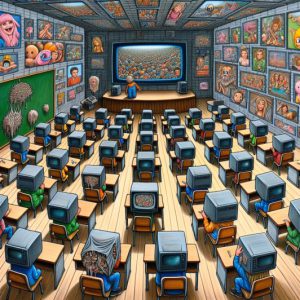
Why Is the US Education System So bad: Rubbish In, Rubbish Out Phenomenon

Investor Sentiment in the Stock Market Journal of Economic Perspectives
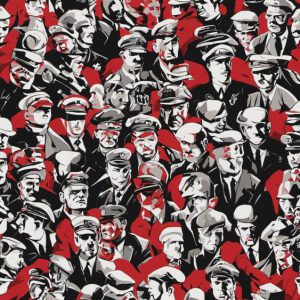
Mass Psychology of Fascism: Unmasking Bombastic News

Identifying Trends and Buying with Equal Weighted S&P 500 ETF
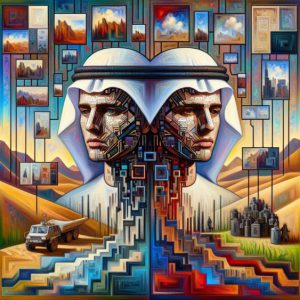
Real Doppelgangers: The Risks in the Age of AI
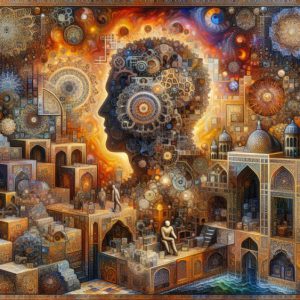
The Intelligent REIT Investor: How to Build Wealth with Real Estate Investment Trusts

TGB Stock Forecast: Rising or Sinking

Stock Market Crash Date: If Only The Experts Knew When

Reasons Why AI Is Bad: The Dark Truth?
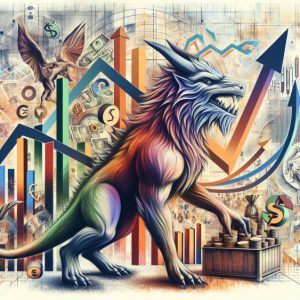
The Inflationary Beast: Understanding What Inflation is and What Causes It



